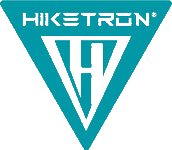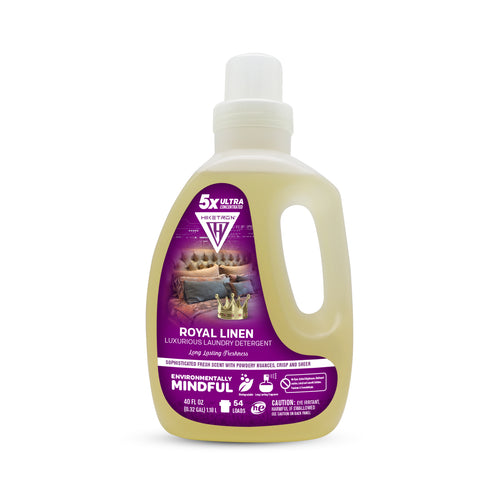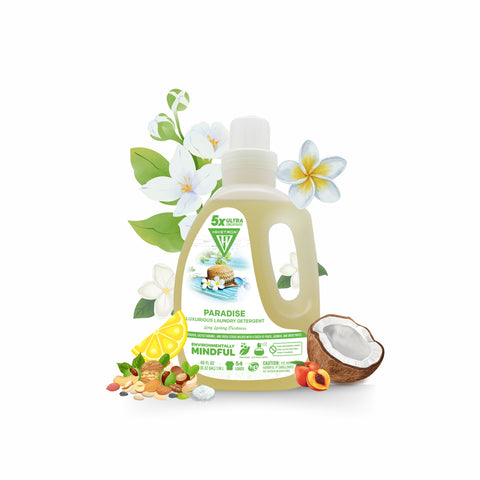Introduction
Enzymes have become a critical component of high-performance laundry detergents, thanks to their ability to effectively target and break down several types of stains. This article delves into the role of enzymes in laundry detergents, exploring their mechanisms of action, the diverse types used, and the benefits they bring to the cleaning process.

Understanding Enzymes in Laundry Detergents
Enzymes are biological catalysts that speed up chemical reactions without being consumed in the process. In laundry detergents, they play a crucial role in breaking down complex stains into smaller, more soluble molecules that can be easily washed away.
Types of Enzymes and Their Functions
Different stains require distinct types of enzymes for effective removal. The most used enzymes in laundry detergents include:

Proteases
These enzymes break down protein- based stains such as blood, sweat, grass, and food. Proteases cleave the peptide bonds in proteins, converting them into smaller peptides and amino acids that are more easily removed by surfactants.
Amylases
Amylases target starch-based stains, such as those from pasta, potatoes, and sauces. They hydrolyse the glycosidic bonds in starch molecules, breaking them down into simpler sugars that can be washed away.
Lipases
Lipases are effective against fat and oil-based stains, including grease, butter, and cosmetics. They catalyse the hydrolysis of triglycerides into glycerol and free fatty acids, making them more soluble and easier to remove.
Cellulases
These enzymes break down cellulose, a component of plant-based stains and fibers. Cellulases help in removing particulate soil and play a role in fabric care by reducing pilling and maintaining the softness and brightness of cotton fabrics.
Mannanases
Mannanases target mannan, a polysaccharide found in common food thickeners and ingredients such as ice cream, salad dressings, and sauces. They help break down these complex carbohydrates into simpler sugars.
Mechanisms of Enzyme Action
The action of enzymes in laundry detergents involves several key mechanisms:
Substrate Binding:
Enzymes bind to specific molecules (substrates) in the stain. This specificity is due to the enzyme’s active site, which fits the substrate like a key in a lock.
Catalytic Reaction:
Once bound, the enzyme catalyses the breakdown of the substrate. This reaction typically involves the addition of water molecules (hydrolysis), which cleaves the chemical bonds in the substrate.

Product Release:
The resulting smaller molecules are released from the enzyme, making them easier to solubilize and remove by surfactants in the detergent.
Reusability:
Enzymes are not consumed in the reaction and can act on multiple substrate molecules, making them highly efficient
Benefits of Enzymes in Laundry Detergents
The inclusion of enzymes in laundry detergents offers several advantages:
 |
Enhanced Cleaning Performance:
These enzymes break down protein- based stains such as blood, sweat, grass, and food. Proteases cleave the peptide bonds in proteins, converting them into smaller peptides and amino acids that are more easily removed by surfactants. |
|
Lower Washing Temperatures: Enzymes are active at lower temperatures, allowing for effective cleaning in cold or warm water. This reduces energy consumption and minimizes fabric damage caused by high-temperature washes. |

|
 |
Reduced Detergent Dosage: These enzymes break down protein- based stains such as blood, sweat, grass, and food. Proteases cleave the peptide bonds in proteins, converting them into smaller peptides and amino acids that are more easily removed by surfactants. |
Fabric Care:
Enzymes like cellulases help maintain the quality and appearance of fabrics by preventing pilling, preserving color, and enhancing softness.

Environmental Impact:
Enzyme-based detergents are more biodegradable and environmentally friendly compared to detergents that rely heavily on harsh chemicals. They contribute to lower environmental pollution and are safer for aquatic ecosystems.

Challenges and Future Directions
Despite their benefits, there are challenges associated with enzyme use in laundry detergents:
Stability:
Enzymes can be sensitive to temperature, pH, and other formulation components. Advances in enzyme stabilization techniques, such as encapsulation and genetic engineering, are addressing these issues.

Compatibility:
Ensuring compatibility with other detergent ingredients, such as surfactants and builders, is crucial for maintaining overall detergent performance.
Cost:
The production and inclusion of high-performance enzymes can be expensive. Ongoing research aims to reduce costs through improved production methods and more efficient enzyme formulations.
Conclusion
Enzymes have revolutionized the world of high-performance laundry detergents, transforming the cleaning process with their ability to target and break down stubborn stains effectively. Their diverse types and specialized functions cater to a wide range of stain challenges, from protein and starch to fat and cellulose. The enzymatic action not only enhances cleaning performance but also offers significant benefits such as lower washing temperatures, reduced detergent dosage, improved fabric care, and a lower environmental impact.
As we look to the future, advancements in enzyme stabilization, compatibility, and production methods hold promise for overcoming current challenges. At Hiketron, we are committed to leveraging these innovations to continually improve our enzyme-based laundry detergents. Our products with enzymes include Clear & Powerful, Dainty Fresh for Pets, and Dainty Fresh for Babies, exemplify our dedication to providing superior cleaning solutions that are effective, gentle on fabrics, and environmentally responsible.
By incorporating one of the most innovative enzyme technologies in the household and industrial cleaning industries, Hiketron ensures that your laundry experience is both efficient and sustainable, keeping your clothes clean and fresh while caring for the planet.
From the CEO
 The journey of Hiketron began with a simple idea – to create ultra-concentrated laundry detergents that are both powerful and environmentally friendly. Aziz, with over 15 years of experience in chemicals, oil and gas, and cleaning products, envisioned a product that would revolutionize the way we do laundry. With his extensive background in leading complex global projects and his role as Vice President of Innovation & R&D, Aziz brought unparalleled expertise to the table.
The journey of Hiketron began with a simple idea – to create ultra-concentrated laundry detergents that are both powerful and environmentally friendly. Aziz, with over 15 years of experience in chemicals, oil and gas, and cleaning products, envisioned a product that would revolutionize the way we do laundry. With his extensive background in leading complex global projects and his role as Vice President of Innovation & R&D, Aziz brought unparalleled expertise to the table.At Hiketron, our mission is simple: to provide high-quality, ultra-concentrated laundry detergents that are kind to the environment and tough on stains. We believe that doing laundry should not only be effective but also sustainable. Our products are designed to reduce waste and minimize our ecological footprint, ensuring a cleaner planet for future generations.
We are proud to say that all of our products and raw materials are sourced in the United States, and everything we do is made right here in Texas. This commitment to American-made products ensures the highest standards of quality and supports local economies.
 CEO - HIKETRO |

















